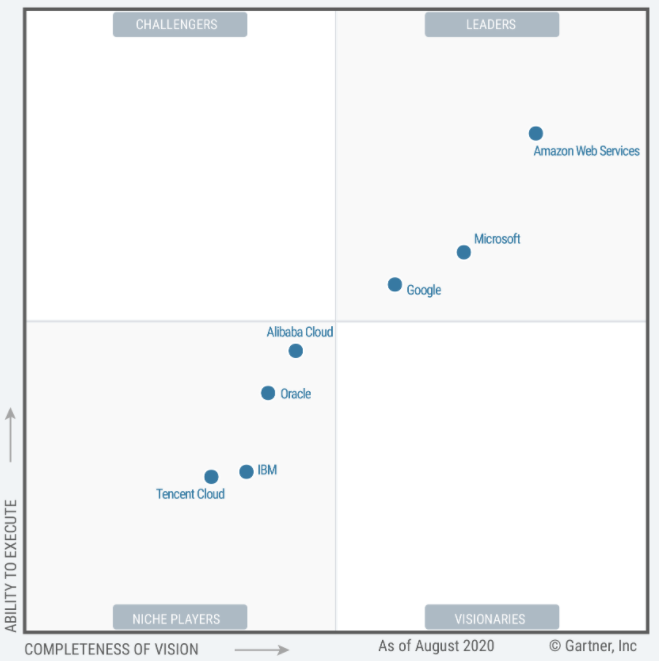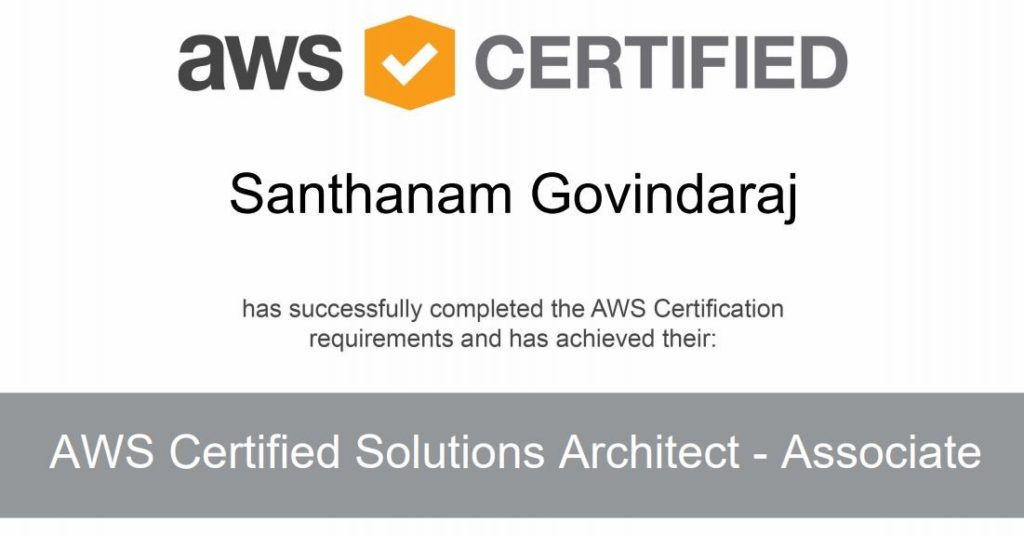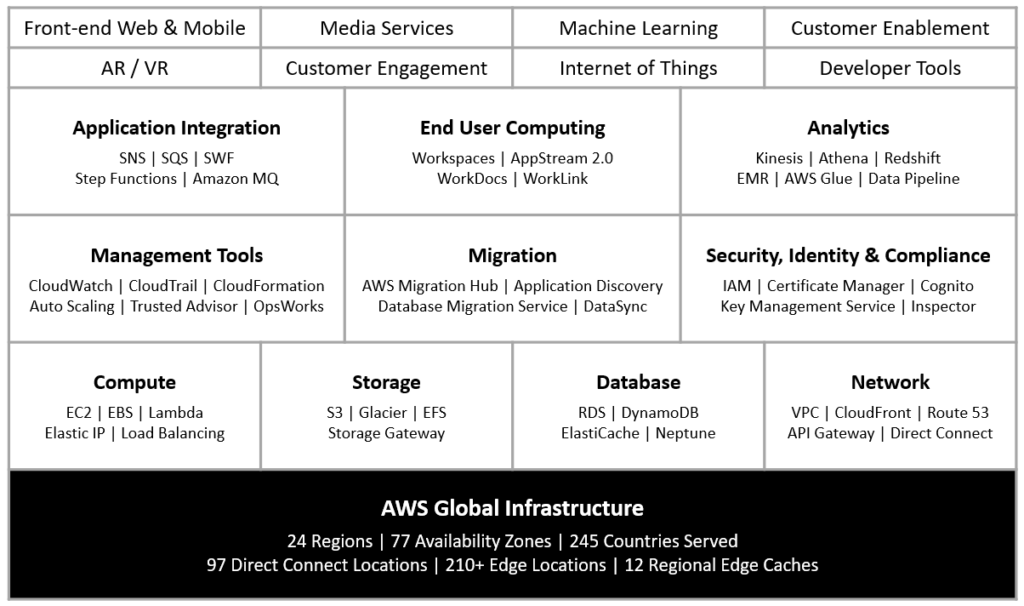In today’s rapidly changing technology landscape, staying relevant as a software engineer hinges on one’s ability to continuously learn and master emerging technologies. To this end, structured technology courses and certifications help lay a solid foundation that can lead to eventual mastery with real life hands-on experience. I target one technology certification every year, finished Stanford Machine Learning Certification last year and decided to pursue a cloud certification in 2020.
My goal was to complete a comprehensive cloud learning path and had to choose between Google Cloud Platform, Microsoft Azure and Amazon Web Services. All of them offer similar services, so learning one will automatically build understanding of the others. I decided to pursue AWS certification as it is the clear industry leader with almost one third of global cloud market share. There are a dozen AWS certifications available and my choice was Solution Architect Associate, which is the most popular one as it covers the entire AWS offering.

Given my existing familiarity and understanding of cloud computing, I had a bit of a head start and was able to successfully complete my certification in about a month. This blog summarizes my experience and learnings through this journey.

AWS certifications require serious preparation and usually starts with identifying a MOOC platform for access to learning material. I had used Coursera for ML certification last year as it came bundled with a Stanford certificate. As this certification is directly provided by AWS, I found Pluralsight to be more prolific and flexible for my needs.
This was my first time using Pluralsight and was thoroughly impressed with the learning experience. I typically used youtube for quick reference of new technology topics but the video lectures on Pluralsight take learning experience to a completely different level. The one minor drawback is hands-on practice. While Coursera offered hands-on exercises, I had to independently create AWS Free Tier account to practice through AWS Management Console and CLI along with Pluralsight courses. Being a techie, this was perfectly fine with me and enjoyed this experience as well.
After completing the first Pluralsight learning path and some hands-on practice, I attempted the sample questions on AWS site and felt my preparation was insufficient. So, I finished a few more relevant Pluralsight courses, digital training from AWS site, read through whitepapers and FAQs before attempting practice exams at Kaplan (offered free with Pluralsight).
To summarize, I leveraged the following resources:
- Certification overview: https://aws.amazon.com/certification/certified-solutions-architect-associate/
- Learning resources: https://app.pluralsight.com/paths/certificate/aws-certified-solutions-architect-associate
- AWS Digital training: https://www.aws.training/Details/Curriculum?id=20685
- AWS Management Console (Free Tier account): https://console.aws.amazon.com/
- Exam guide, sample questions, whitepapers, FAQs: https://aws.amazon.com/certification/certification-prep/
AWS is vast and a solution architect is expected to understand all its offerings. So, developing deep understanding across foundational service domains of compute, networking, storage and databases, along with other key topics like security, analytics, app integration, containerization, cloud native solutions, etc made it an awesome learning experience.

After about 3 weeks of preparation, I scheduled my exam at https://www.aws.training/Certification. AWS certification exams had to be taken at an exam center in a controlled environment but with COVID situation, proctored online exam option was also available. I chose Pearson VUE exam and scheduled for a Sunday morning slot. All the caveats called out with proctored online exam is a bit scary, particularly if internet or power connection is lost in the middle of the 130 minutes exam (quite common in India during monsoons). Fortunately, my internet connection remained stable despite heavy rain during the exam and allowed me to pass the exam. So, here I am – AWS Certified Solution Architect – Associate!